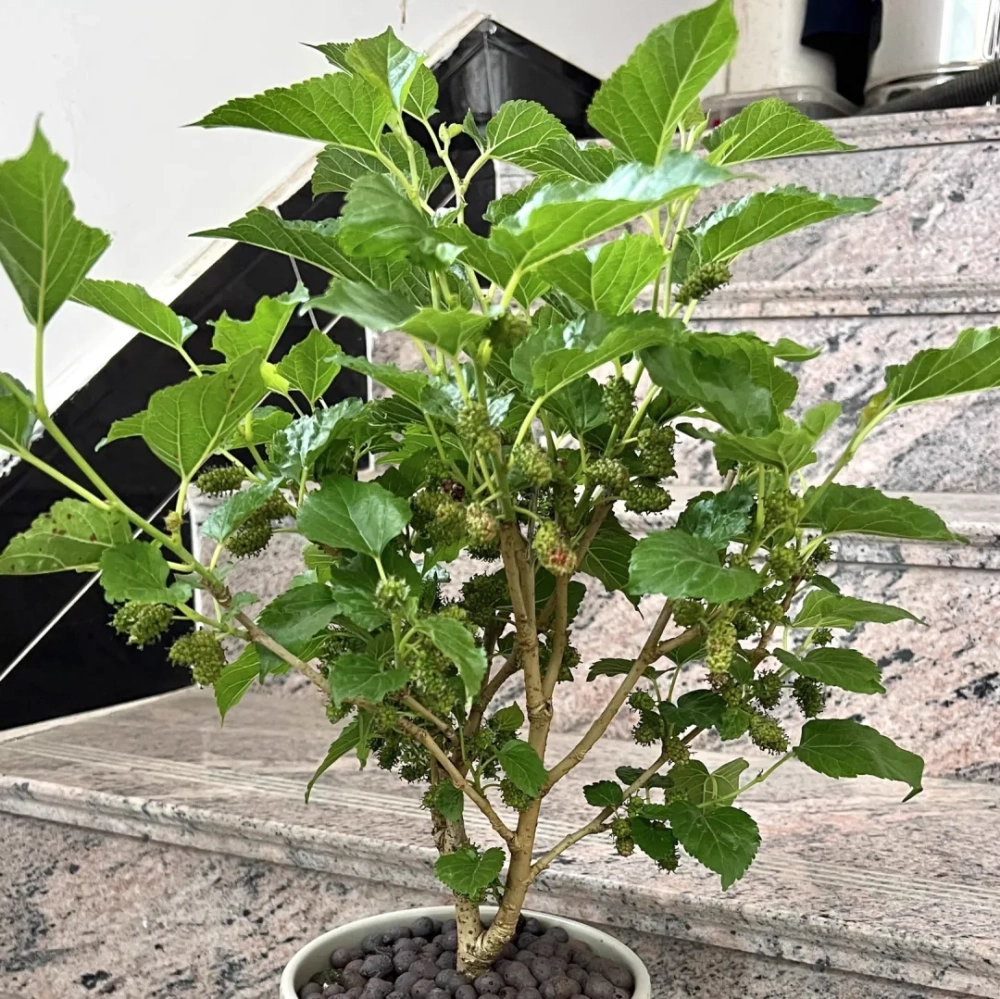Let's talk about mulberries today! The mulberry fruits are purple-black, round and smooth, with a sweet and sour taste. They are not only delicious fruits but also rich in nutrients. They are rich in various nutrients such as vitamin C, vitamin E, anthocyanins and dietary fiber. They can be regarded as little experts in anti-oxidation, allowing us to become more beautiful and healthier quietly while enjoying the deliciousness.
Moreover, there are various ways to eat mulberries. You can eat them directly to experience the original sweet and sour taste; make them into mulberry jam and spread it on bread to start a energetic day; brew a cup of mulberry wine and have a little drink when getting together with friends, and the slightly tipsy atmosphere is just right; you can also boil them into mulberry water, which is sweet, moistening, healthy and delicious.
Mulberries can be planted at home! You can choose fruit mulberry varieties, such as "Wuzida 10" and "Changguosang". They can perform well on balconies or in small yards. When planting, choose a flowerpot with a diameter of about 30 centimeters. The soil should be loose, fertile and have good drainage. It's quite good to mix decomposed leaf soil, garden soil and river sand in a ratio of 3:2:1. After planting the mulberry seedlings, water them thoroughly and place them in a place with scattered light and good ventilation to help the seedlings recover.
However, during the maintenance process, you may encounter the situation where the leaves wither. If the watering is improper, either too much water causing root rot or too little water resulting in drought can lead to the withering of leaves. You should follow the principle of "watering when the soil is dry and stopping when it's wet". Insert your finger 2 to 3 centimeters into the soil, and if it feels dry, water thoroughly. Excessive fertilization can also burn the roots and cause the leaves to wither. Applying thin fertilizers frequently is the right way. Apply a thin liquid fertilizer once a month during the growing season, and appropriately supplement phosphorus and potassium fertilizers during the flowering and fruiting periods. There is also the issue of light. If the light is too strong, the leaves will be burned and withered, so it is necessary to shade them appropriately, especially in the hot summer. However, insufficient light for a long time is also not okay, which will make the plants grow weakly and the leaves turn yellow and wither. Therefore, it is necessary to ensure 4 to 6 hours of scattered light every day.
During daily maintenance, pay attention to the temperature. Mulberries have poor cold tolerance. When the temperature is below 0 °C in winter, they should be moved indoors for warmth, and the indoor temperature should be preferably 5 to 10 °C. It is also necessary to prune regularly, cut off dead branches, diseased branches and overly dense branches to keep the plants ventilated and transparent, and promote the germination of new branches and the differentiation of flower buds. In addition, mulberries are easy to attract fruit flies. When the fruits are ripe, you can put bags on them for protection. Usually, keep the environment clean to avoid the breeding of fruit flies.
What should I do if the leaves of potted mulberry wither?

Share with
Tagged in :




Leave a Reply